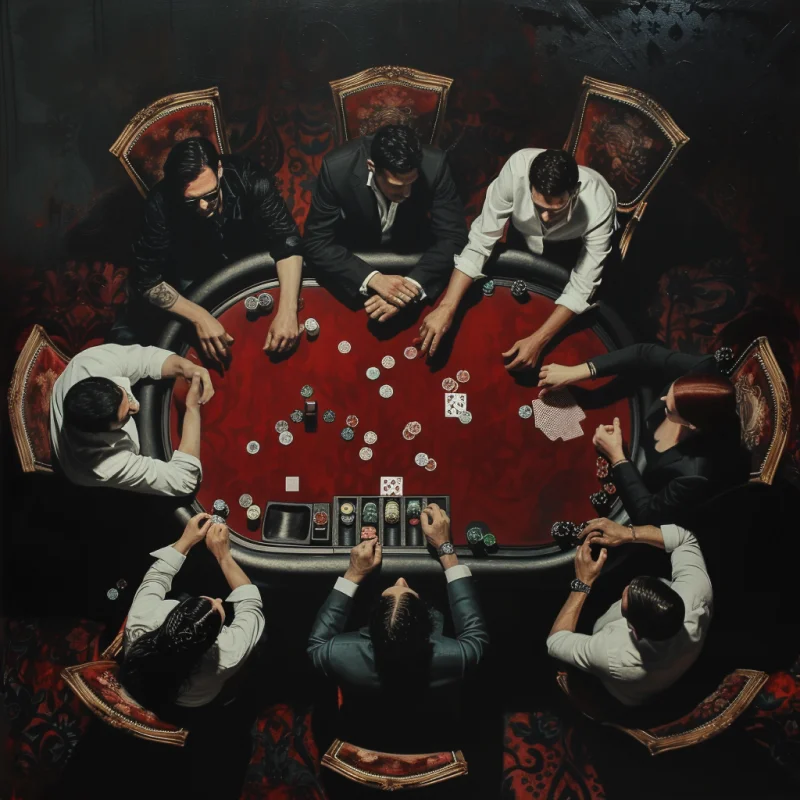Tips For Better Bluffing Poker


1.0
Default
On any given day, doing anything with a poker face can help you get away with almost all your ‘villainous’ plans (with a mischievous grin in place, of course). But in high-intensity poker, a poker face can make or break a game. Even with numerous risks, many amateur and expert poker players will never stop trying to pull off the greatest bluffs in the game. This article explains the most prevalent poker bluffs and their basic principles and offers advice on calling a bluff when playing poker the next time. So do you want to be a better bluffer when playing poker? Here’s what you should know.
Technically, bluffing in poker is placing a bet or raising one with a hand that is not deemed to be the smartest move in a precarious portion of a poker match. This is admittedly one of the most interesting parts of a poker match - and it continues to challenge opponents and even induces players to fold.

The whole point of playing poker is the allure and thrill of playing with people who themselves know that they don’t know the next step. Many players may not be that effective at bluffing, but most poker players know that it can also benefit their strategy in the long run. There’s a certain style and panache one must have when playing poker, and most casual gamblers or competitive poker pros will tell you the same thing: developing a play takes time.
So, yes, bluffing is essentially deemed important in poker and even a necessary part of a good game. Besides, without bluffing, players would have to have a strong hand to win the whole pot! Nine times out of ten, this is highly unlikely. That’s why several factors must be considered when trying to bluff better.
Well, this is a given because whoever you’re playing against, whoever is sitting across from you or beside you- has a lot to do with how well you’ll play. Watching their every move might seem smart, but it’s crucial to pay attention to how they win and lose. Almost any player has a certain tell or specific tendencies that come up when bluffing in a poker game.
Who says size doesn’t matter? Poker players beg to differ! When trying to pull off a bluff, you have to consider what size of bet can make you the most profit; the same goes for your opponents. A small bet doesn’t necessarily need to garner multiple folds compared to a huge bet to make bank. However, the free hand lies with you when trying to find the sweet spot and finding the right bet size and profit ratio.
This tip is more likely to go well when attempted with good judgment. So, when playing poker, having a good mindset is crucial to avoid huge mistakes when calling or folding. In situations where you consistently make good hand plays without losing them, your opponents may mistakenly believe that you are playing too aggressively. You should aim instead to avoid making any well-executed bluffs at this point in the game, as it can give your opponents the signal to counterattack.

Raising (or calling the raise) of another opponent is a surefire way to set the stage. What you should be looking for here is that someone went for a pre-flop raise. Now, it doesn’t really have to be you per se, but setting up a player to lead the way works out well.
Not only will this signal to your opponents that you have a good starting hand, but this approach also helps narrow down the better bluffers and fill up the pot well enough to take home.
When we say steal, we mean steal the blinds more (not theft!) Try not to fall under the impression that bluffing is best when you have an excellent hand. We recommend that you check out your opponents and see which ones in the blinds are more vulnerable.
For example, if they show 9 of hearts, 6 of hearts, a King of spades, and 3 of spades, then you notice players who don’t have much eagerness when small or big blinds are up, so make it a point to raise instead of folding. This is a basic bluff that’ll be sure to win you the pot.
Another way to draw a bluff is to raise before going for the flop more often, regardless of the hand you’re dealt. Popularly known as a ‘light 3-bet,’ this approach will require you to eye your opponents and observe which ones don’t often show any teeth.
This is a good way to find the cracks in your opponent’s betting style. It’s best to try this tip later in the game once you catch them raising, but consider that it only works best if they raise in a blind versus blind situation.
As far as we know, bluffing is not a constant in poker, and that only means not all bluffs go all the way, which means they can fall apart on the turn. Suppose your goal is to eliminate one opponent during the earlier stages of the game. Your strategy is to be aggressive with your hand. You know you have the hand to win - but keep in mind that assessing your opponent’s range can make a difference in the long run; thus, think of the bigger picture.
Consider these questions before making a sure win:
It may be time to call it quits if they seem like a reliable player and are responding aggressively to your own aggression. It makes no sense to discard excellent chips after poor ones, after all! Knowing when to give up is a crucial part of bluffing, ideally before you've wasted more chips than required.
When it comes to bluffing, a win is not going to happen for you if you’re all about the showdown. The only way to get to a win is to bet, and after flopping, it’s more likely that you have less than three chances left to bet, so remember to do it wisely.
When trying to bluff a bluffer, it’s always best to know when and figure out how to maximize even the most basic bluffs during a high-stakes poker game.
You don’t have to be a genius or competitive poker player to know that a total bluff runs with several risks, which is why semi-bluffs exist to help improve your hand. Say you have the following hands:
It’s important to assume that these types of hands dictate that you’ll likely win once the right card comes. However, this still puts you in a position where you’re behind, and the right card comes only after you’ve made a semi-bluff. You must be thinking, where does that leave me? Well, it still leaves you with a lot of potential to build a better hand! Since, technically, you’re not really bluffing just yet.
A semi-bluff in poker is a good way to gradually build a nice pot in case your luck turns up, and you actually draw. The same goal remains: getting your opponents to fold is key. Now, even if there’s no absolute guarantee the hand you built doesn’t go through, at least you were able to improve it by using a semi-bluff– a good way to build stamina in the long run.
If your main takeaway from this blog is to bluff some more, then you didn’t entirely waste your time. Bluffing is a delicate yet brilliant way to build a betting style. In poker, this can vary from pre-flop to final river raise, and knowing the who, what, when, and where can make a difference in how you fare.
Aside from winning the pot, bluffing is a good way to enhance your poker strategies and build a nice pot for you and your opponents to rattle with. The key is to always keep the tight and recreational players guessing ‘cause, at the end of the day, the players all have something to lose - and there’s no reason why it should be you.

July 26th, 2024
7 Best Horses that Made A Name in Horse Racing
July 24th, 2024
The Role of the Banker in Baccarat - and Why This Could Sway Your Odds
July 19th, 2024
5 Best Slot Games for Art Lovers to Feast Their Eyes on
July 16th, 2024
Fact or Fiction: Pai Gow Edition – What First-time Players Should Watch Out For
July 15th, 2024
Tech and Horseracing: What to Know about Digitizing the Horsebetting Experience
July 9th, 2024
5 Online Casinos with Less than $20 Minimum Deposit You Should Check Out in 2024
July 3rd, 2024
Debunking Common Lottery Myths: What First-time Bettors Should Know
July 2nd, 2024
What to Know About the State of Michigan and Online Poker in 2024
July 1st, 2024
Debunking Common Baccarat Myths: Why You Should Know Better
June 27th, 2024
Understanding the Legal Aspects of Horse Betting in the US: What to Know in 2024Are you sure?
This will delete all chat history, and I will not remember what we were talking about.
✔
Todays Hot Deals